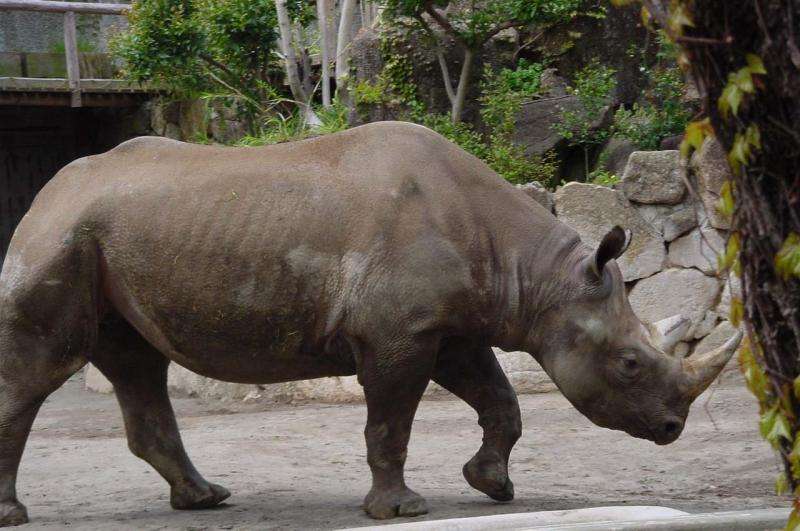Herpes viruses with an unusual broad host range

In general, herpes viruses are considered to be specific to a single species or group of related animals. Recent research findings from the German Leibniz Institute for Zoo and Wildlife Research (IZW) contradict this assumption by showing that two equine herpes viruses (type 1 and type 9) have evolved an unusual broad host range. Despite favoring African herbivores these viruses can jump beyond their natural hosts, infecting polar bears and other distantly related species and causing fatalities. Interestingly, herpes virus type 9 (EHV-9) may use the African rhinoceroses as a possible natural host or reservoir. The findings were published in the scientific journal PLOS ONE.
Equine herpes viruses type 1 (EHV-1) and EHV-9 are associated with respiratory disorders, abortion, neurological manifestations and death in horses and their wild relatives such as zebras and onagers and in unusual hosts such as polar bears. Although herpes viruses are known to be host specific, EHV-1 and EHV-9 are somewhat unusual and lack strict host specificity. These two viruses can jump beyond their natural hosts and infect non-equid species with fatal consequences.
The results of the study demonstrate a high prevalence of EHV-9 antibodies in healthy African rhinoceroses, suggesting that they are susceptible to EHV-9 infection and may serve as a natural and possibly definitive host or reservoir. Zebras, in contrast, had a lower prevalence of EHV-9 antibodies while having a much higher EHV-1 prevalence, consistent with other equid species such as domestic horses. Interestingly, a higher prevalence of EHV-1 was observed in free-ranging zebras than in zoo kept zebras, suggesting captivity may reduce exposure to virus infection for EHV.
An international team of scientists from the German Leibniz Institute for Zoo and Wildlife Research (IZW), Freie Universität Berlin (Germany), Réserve Africaine de Sigean (France), Bwabwata Ecological Institute (Namibia), Zoo Basel (Switzerland), and the Faculty of Veterinary Medicine of Kafrelsheikh University (Egypt) investigated the sero-prevalence (whether and how much antibody against these viruses each animals produces) of EHV-1 and EHV-9 in wild and captive animals using a novel sensitive and specific "immunological assay" (biochemical test). The assay was applied to hundreds of samples collected from captive and wild animals representing 30 species in 12 families and five orders.
The scientists proposed that EHV-1 and EHV-9 have evolved a broad host range among African mammals including distantly related perissodactyls. Thus, EHV-1 and EHV-9 have a broad host range favoring African herbivores and may have acquired novel natural hosts in ecosystems where wild equids are common and are in close contact with animals such as zebras and rhinos. Several cases of fatal cross species transmission of EHVs have been documented recently, with the assumption that zebras or other equids were the source of infection. Further study is needed to determine the role of these animals in EHV epidemiology in both captivity and the wild.

More information: Azza Abdelgawad et al. Comprehensive Serology Based on a Peptide ELISA to Assess the Prevalence of Closely Related Equine Herpesviruses in Zoo and Wild Animals, PLOS ONE (2015). DOI: 10.1371/journal.pone.0138370
Journal information: PLoS ONE
Provided by Forschungsverbund Berlin e.V. (FVB)



















